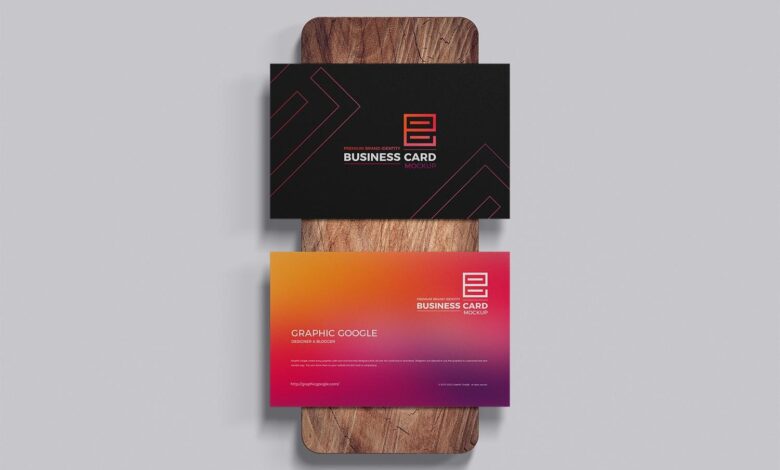How Business Cards Strengthen Brand Identity

In an age where digital communication reigns supreme, the traditional business card endures as a bastion of professional networking. This indispensable tool, though compact in size, wields considerable influence over brand identity, propelling it beyond mere aesthetics to embody the essence of a business’s character and ethos. Its tangible nature offers a sensory experience that digital means cannot replicate, forging lasting impressions that are crucial for business relations and brand recognition.
The Symbiotic Relationship between Business Cards and Branding
A business card functions as a tangible extension of a company’s brand identity. It is the physical manifestation of the brand’s narrative, values, and distinctiveness that the holder can convey in the palms of their hands. The design, texture, and overall quality of a business card directly reflect the brand it represents, which is why selecting hardcover booking printing services ensures that the card surpasses mere functionality, transforming into a compelling branding instrument.
Quality speaks volumes, and a business card that employs premium printing services can exude sophistication and attention to detail that aligns with an established or aspiring brand image. First impressions are often lasting, and a well-crafted business card can be the very linchpin that cements a company’s professional image in the minds of potential clients or collaborators.
Business Cards as Brand Ambassadors
Each time a business card changes hands, it carries with it the chance to build or reinforce brand recognition. While the primary role of a business card is to share contact information, its secondary, yet equally significant role, is to act as a brand ambassador. The design elements such as the logo, colour scheme, and font choice should be consistent with the brand’s wider marketing materials, ensuring a coherent brand message across all platforms.
The tactile elements of a business card also contribute significantly to brand perception. Finishes such as foil, embossing, or spot UV can add that extra touch of class or modernity, depending on what the brand aims to convey. The textures and the weight of the paper chosen can also make a business card—and hence, the brand—stand out. Is it classic linen or sleek matte? Thick card stock or eco-friendly recycled paper? These decisions not only communicate aesthetic but also brand values.
Networking and the Power of Physical Interaction
Despite the increasing shift to digital mediums, physical interactions and networking events continue to be invaluable for forming and solidifying business connections. The business card plays a pivotal role in this exchange, serving as a catalyst for conversation and symbolising the readiness to engage in professional relationships. Furthermore, the action of exchanging business cards can be a ritual indicative of mutual interest and the beginning of professional rapport.
The longevity of a business card also aids in brand retention. Unlike digital information that can be easily discarded or lost in an overflowing inbox, a business card can linger on a desk, in a wallet, or amidst a collection, subtly reinforcing brand identity each time it catches the eye of its owner or their associates.
Consistency Is Key in Branding
Connection with a brand deepens through repeated and consistent exposure, which is where business cards can play a surprisingly effective role. If a business maintains consistency in its branding across various marketing materials, including business cards, it can fortify brand recognition. This consistency extends to all elements of the card, encompassing both visual and material qualities.
With advances in hardcover booking printing technologies, businesses can ensure superior durability and presentation quality that reflect the brand’s integrity and professionalism. High-quality printing can produce crisp, clear text and vibrant, true-to-brand colours that are essential for maintaining brand consistency and recognition.
The Impact of Superior Printing Services on Brand Identity
Ultimately, the caliber of printing services utilised has a profound impact on the final product’s ability to solidify brand identity. Utilising premium printing services assures that each business card is not just a communication tool, but a piece of art that conveys the nuances of a brand’s story. It connects the tactile sense to the visual experience of the branding, creating a multi-faceted impression.
Investing in high-quality printing services underlines a brand’s commitment to excellence and can be the deciding factor that sets that business apart from competitors. As business cards are exchanged, handed out at conferences, and shared during meetings, their quality can significantly impact brand perception, playing a subtle yet essential role in brand development and business success.
Conclusion: Reinforcing Brand Identity through Business Cards
Despite their compact nature and traditional roots, business cards remain a crucial element in reinforcing brand identity. As physical pieces that can be held and felt, business cards create a direct personal connection that digital media cannot emulate. By choosing high-quality printing services, companies can ensure their business cards serve as powerful ambassadors for their brand, leaving a tangible and lasting impression.
Through thoughtful design, consistent presentation, and tactile experience, business cards become more than mere contact information carriers; they evolve into significant branding tools that affirm and extend the company’s reach. Therefore, the power of the business card should not be underestimated in any branding strategy, as it continues to hold sway in establishing professional identities in a world of fleeting digital encounters.




